Filter by
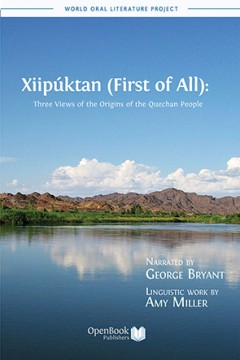
Xiipúktan (first of all): three views of the origins of the Quechan people
The Quechan people live along the lower part of the Colorado River in the United States. According to tradition, the Quechan and other Yuman people were created at the beginning of time, and their Creation myth explains how they came into existence, the origin of their environment, and the significance of their oldest traditions. The Creation myth forms the backdrop against which much of the tr…
- Edition
- -
- ISBN/ISSN
- 9781909254411
- Collation
- 210 p. ; 24 cm
- Series Title
- -
- Call Number
- 973.0497 BRY x
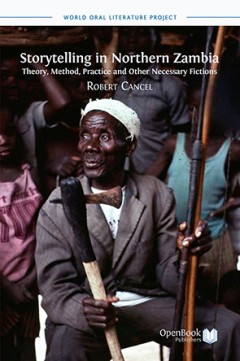
Storytelling in Northern Zambia: theory, method, practice and other necessary…
Storytelling plays an important part in the vibrant cultural life of Zambia and in many other communities across Africa. This innovative book provides a collection and analysis of oral narrative traditions as practiced by five Bemba-speaking ethnic groups in Zambia. The integration of newly digitalised audio and video recordings into the text enables the reader to encounter the storytellers the…
- Edition
- -
- ISBN/ISSN
- 9781909254619
- Collation
- xviii, 274 p. : ill. : ind. ; 24 cm
- Series Title
- -
- Call Number
- 808.543 CAN s
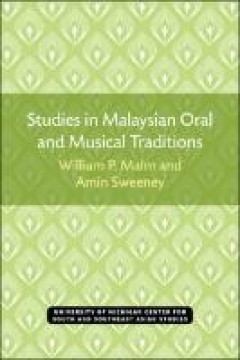
Studies in Malaysian oral and musical traditions
The first of two studies included is “Music in Kelantan, Malaysia and Some of Its Cultural Implications,” by William P. Malm. Kelantan is the northernmost province on the east coast of Malaysia. It is considered to be the most orthodox area in a nation whose state religion is Islam. At the same time it must be noted that it borders to the north with the Buddhist country of Thailand and to t…
- Edition
- -
- ISBN/ISSN
- 9780472902286
- Collation
- 99 p.
- Series Title
- Michigan Papers On South And Southeast Asia
- Call Number
- 781.75951 MAL s
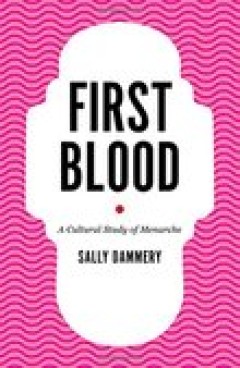
First blood: a cultural study of menarche
Sally Dammery.
- Edition
- -
- ISBN/ISSN
- 9781876924836
- Collation
- xii, 207 pages ; 24 cm.
- Series Title
- Cultural studies
- Call Number
- 305.4 DAM f

Genre-text-interpretation : multidisciplinary perspectives on folklore and be…
"This book presents current discussions on the concept of genre. It introduces innovative, multidisciplinary approaches to contemporary and historical genres, their roles in cultural discourse, how they change, and their relations to each other. The reader is guided into the discussion surrounding this key concept and its history through a general introduction, followed by eighteen chapters tha…
- Edition
- -
- ISBN/ISSN
- 9789522228444
- Collation
- 482 p.
- Series Title
- Studia Fennica Folkloristica
- Call Number
- 398.0946 GEN g
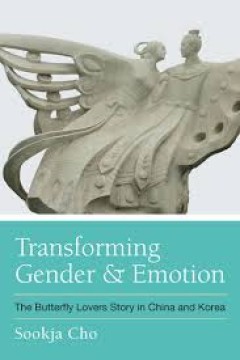
Transforming gender and emotion: the butterfly lovers story in China and Korea
Often called China's "Romeo and Juliet", the story of the Butterfly Lovers (the tale of Liang Shanbo and Zhu Yingtai, or the Liang-Zhu story) is one of the most famous folk stories in traditional China. With its origins dating back to the fourth century, it has spread and evolved across genres, country, religion, and culture. Transforming Gender and Emotion examines how this story has successfu…
- Edition
- -
- ISBN/ISSN
- 9780472900855
- Collation
- 287 p.; 22 cm.
- Series Title
- -
- Call Number
- 398.20951 CHA t
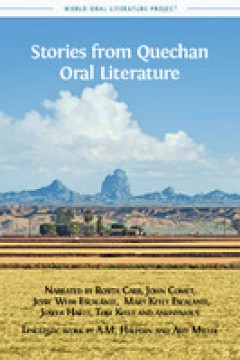
Stories from Quechan oral literature
"The Quechan are a Yuman people who have traditionally lived along the lower part of the Colorado River in California and Arizona. They are well known as warriors, artists, and traders, and they also have a rich oral tradition. The stories in this volume were told by tribal elders in the 1970s and early 1980s. The eleven narratives in this volume take place at the beginning of time and introduc…
- Edition
- -
- ISBN/ISSN
- 9781909254879
- Collation
- XII, 533 p.
- Series Title
- World Oral Literature Series
- Call Number
- 970.00497 HAL s
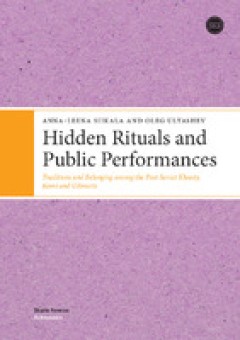
Hidden rituals and public performances : traditions and belonging among the p…
Why are Khanty shamans still active? What are the folklore collectives of Komi? Why are the rituals of Udmurts performed at cultural festivals? In their insightful ethnographic study Anna-Leena Siikala and Oleg Ulyashev attempt to answer such questions by analysing the recreation of religious traditions, myths, and songs in public and private performances. Their work is based on long term field…
- Edition
- -
- ISBN/ISSN
- 9789522228123
- Collation
- 365 p.
- Series Title
- Studia Fennica Folkloristica, 19
- Call Number
- 390.089945 SII h
 Computer Science, Information & General Works
Computer Science, Information & General Works  Philosophy & Psychology
Philosophy & Psychology  Religion
Religion  Social Sciences
Social Sciences  Language
Language  Pure Science
Pure Science  Applied Sciences
Applied Sciences  Art & Recreation
Art & Recreation  Literature
Literature  History & Geography
History & Geography